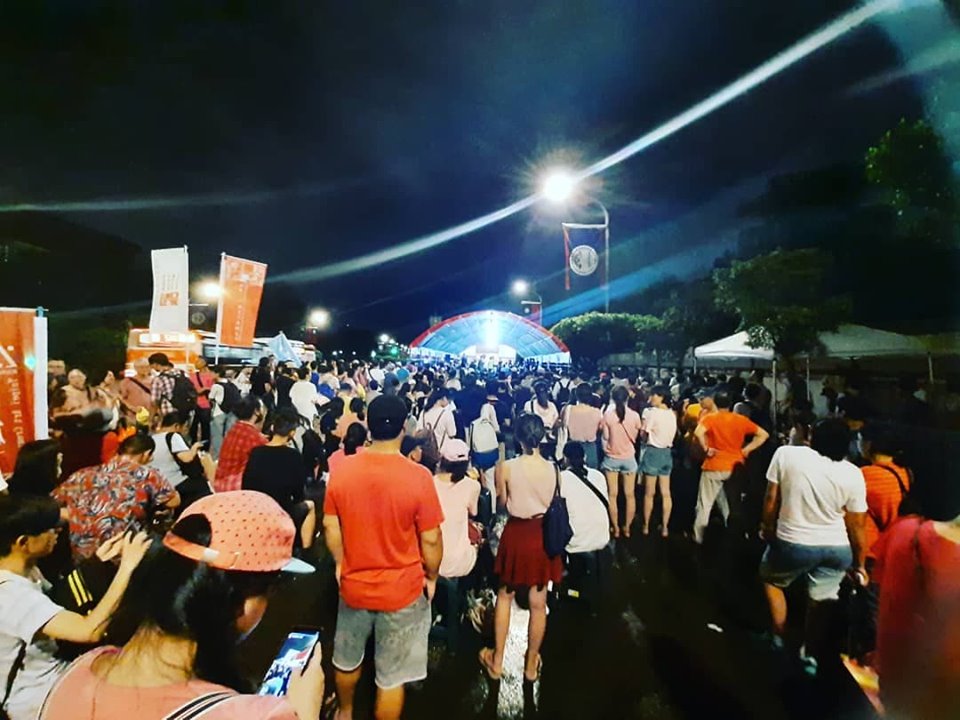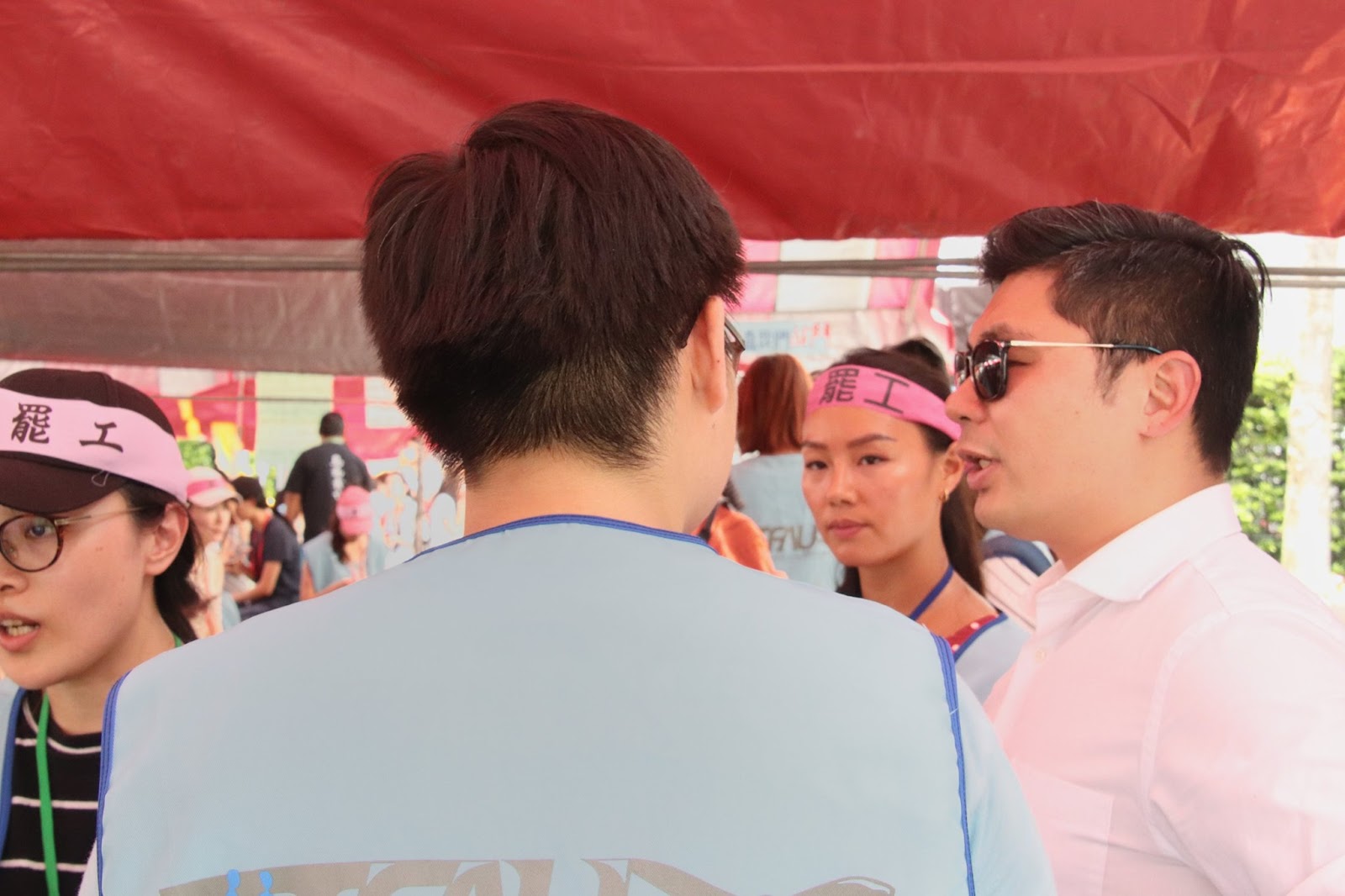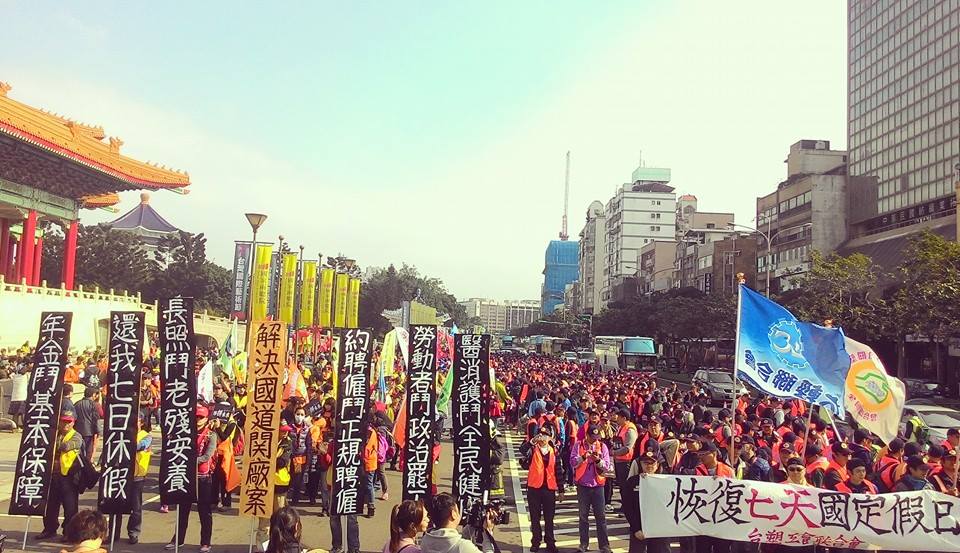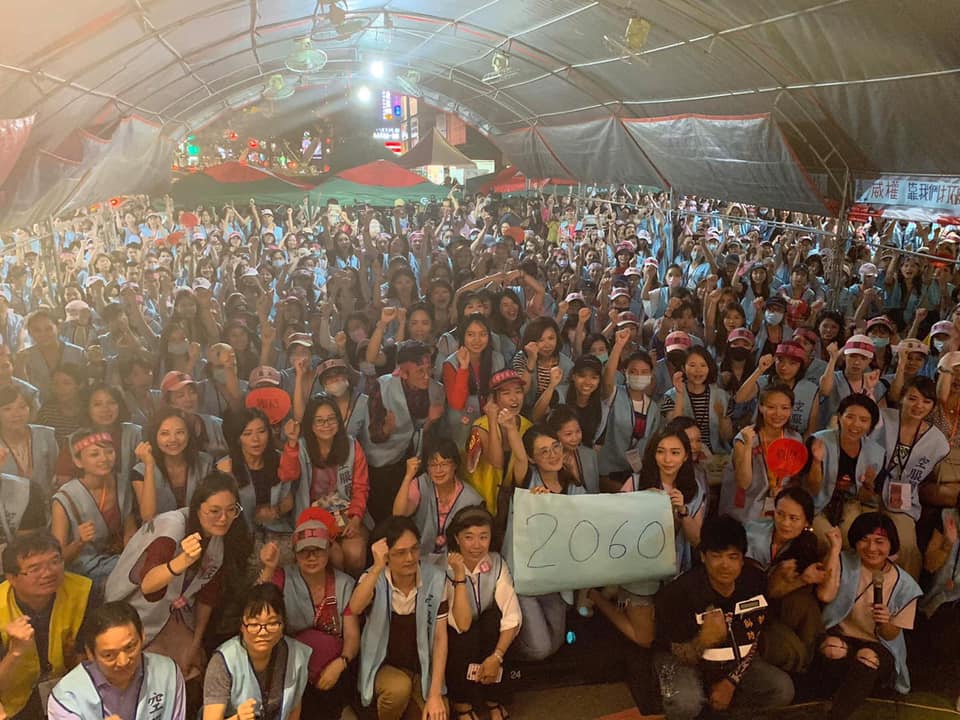The EVA Air flight attendants strike, led by the Taoyuan Flight Attendants Union (TFAU) ended on July 6th, 2019 after over two weeks of struggle. Management slightly relented on their previous hardline attitude as they reached an agreement with the union. From the perspective of the Taiwanese labour movement, this strike will not be the end, but merely an episode that shows the sign of times to come.
Just as many people throughout society are pointing out, the significance of this strike lies not in its immediate demands and its participants, but in the fact that under a domineering corporation where workers’ rights have always been suppressed, there emerged a young union organisation that was able to launch a strike. Although the gains of the strike, in the end, fall short of the union’s original demands, we can see that the strike shows that when the working class get organised, even if they are young, lacking in experience and make some mistakes along the way, they can become a force that makes the capitalists tremble. As the mass movement in Hong Kong was erupting concurrently, the Taiwanese capitalist class was concerned that a mass movement could also erupt in Taiwan and therefore mobilised to put down the strike.
The questions of defence and strategy within the strike movement
The EVA Air strike which saw the participation of over 2,300 flight attendants was the largest private-sector strike in Taiwan since the KMT authoritarian regime’s martial law ended in 1987. It caused over NTD $2.78 billion (around US$89 million) of losses for the EVA Air management and attracted widespread attention throughout Taiwanese society.
During the 17 days of struggle, the EVA management and all mainstream bourgeois media went all out to apply all kinds of pressure to isolate and slander the striking flight attendants. When the union leadership had already made some concessions during the latter stage of the strike, EVA management instead took advantage of the situation and demanded the union abide by a set of “peace provisions” which would severely hamper the union’s ability to organise. This forced the workers to turn the strike from a fight for reasonable improvements in their conditions to a defence of the union’s very survival.
The EVA management and the entire ruling class spared no efforts in trying to exert pressure on the strike despite the reasonable demands from the workers. The pro-DPP, and pro-KMT/China media companies, who would ordinarily (superficially) be at each other’s throats, suddenly stood united, and acted in a disciplined and coordinated manner in spreading slanders, misinformation, or otherwise blatantly pro-management reporting about the striking workers. Politicians attempted to politicise the strike. While the KMT held a press conference demanding apologies and resignations from DPP ministers for failing to legislate for mandatory strike notices from unions who allowed for the EVA strike to take place, which, according to them, “damages the rights of consumers.” Green Party co-leader and Taoyuan city councillor Xavier Wang took to Facebook to say that the strike would only benefit the union staff and the “party that wishes to use this strike for their campaign” which implies both the KMT and its local rival the New Power Party. More direct pressures from the bourgeoisie were exerted upon the security firm that the TFAU hired as custodians to passports and travel documents that the striking flight attendants turned in at the picket line preemptively ended their contract with the union, citing pressure from “many sides.”
In the end, the EVA management made some concessions on demands regarding improvements in conditions for certain flight routes and work expenses, allowing union cadres time off to conduct union business, as well as granting a regularised meeting between union and management. The union made a grave mistake in pledging that domestic flight workers would not go on strike and that they would not launch any controversial actions within the next three years, thus ending the struggle while giving room for management to conduct retaliatory attacks against union militants as they have in fact been doing since the end of the strike.
 The strike leadership had a chance to build for a sizable solidarity rally if they spent some time actively mobilise for it / Image: Taoyuan Flight Attendant Union
The strike leadership had a chance to build for a sizable solidarity rally if they spent some time actively mobilise for it / Image: Taoyuan Flight Attendant Union
Although the economic gains from this strike were minimal, it inspired the whole of Taiwanese society and the working class. A whole generation of Taiwanese workers and youths learned that a strike can be used as a weapon to defend oneself against the capitalist class’s attacks. They also see how the bosses have taken advantage of the low rate of trade union membership in Taiwan to maintain atrocious working conditions for all workers. Over 30,000 people joined a Facebook group started by friends and families of the striking flight attendants called “Fight For EVA Strike,” where they discussed how to support the strike from outside.
On the basis of this enthusiastic support from the internet, in spite of slanders form all the major bourgeois media, the strike leadership had a chance to build for a rally that could in turn have inspired all of the Taiwanese working class. If they had spent a few days mobilising the followers of the Facebook group and their own members to other workplaces, schools, and public spaces to explain their cause and invite all working class people to attend a rally in support of workers’ rights, such a rally could very well have been a very large one. In the end, the union publicly called for a rally on Tuesday, July 2nd with just one day’s notice. Despite the short notice and the pouring rain, there were still over one thousand people that attended the solidarity rally, which shows what could have been possible.
The union that led the strike, the Taoyuan Flight Attendants Union, was only set up five years ago, and none of the EVA Air flight attendants had ever directly struggled against management before. Despite this, the enormous solidarity and creativity of the workers still spurred on this struggle. Although in the end some gains were made, and we salute the union for its steadfastness and sacrifice, it is still necessary to draw some conclusions from this experience to arm ourselves with programs and strategies that can strengthen the power of the working class when the bourgeoisie inevitably launches counterattacks in the future.
Firstly, we must understand that any major strike action will attract the attention of the entire Taiwanese capitalist class, hence allowing them to immediately mobilise all sorts of politicians, allies and means to suppress the workers. The mainstream media of both the pro-DPP and pro-KMT/CCP persuasions thoroughly revealed their bourgeois nature by hurling all kinds of disgusting slanders against the strike, which must have left a deep impression on all the striking workers. Yet this only betrayed the Taiwanese bourgeoisie’s deep fear that class struggle can spread. Hence, it was necessary for them to immediately mobilise their media to steer society’s support away from the strike to destroy it. The Taiwanese working class at present is not as organised and alert as their class enemies. Doesn’t this show that we the working class must organise ourselves against the media machinery and other social forces controlled by the capitalists? If the capitalists already realised that their biggest threat is the power of a well-organised working class which they will do everything to root out, isn’t it time for the workers to realise the power that they hold within their hands and learn how to use it?
Therefore, at the present stage, in the process of enhancing the militancy and the solidarity of the Taiwanese working class, the union leaders have a responsibility to maximise the scale of their strikes and connect individual strike demands to the broader masses. The union leadership successfully won over the vast majority of EVA Air flight attendants into supporting the strike, but beyond winning the sympathies of the workers they must also inspire the workers to unleash their creativity, take ownership of their demands, and direct the movement democratically from below. As most striking EVA Air flight attendants had never been on strike before, the union leadership should not behave like an office standing above the rank and file workers but should actively educate the workers, encourage them to participate, and assist them in recognising the immediate situation and the significance of their experiences. This work cannot be confined within individual unions but must be actively conducted among all workers.
Unfortunately, the union leadership did not try to win over workers outside of the union via a program. It is not enough to simply make an emotional appeal to other workers to win them over to the demands of the strike. They should have actively explained the situation and highlighted the deep relevance of this strike for all workers. The lack of such a propaganda effort allowed management to create divisions among the workers and lead to demoralisation as a first step to attacking the entire labour movement. In relation to the flight attendants who regretted going on strike, the pilots, or the logistical workers that were opposed to the strike, the union leadership should have done more preparatory work beforehand to win them over to the cause of the strike, as they are all workers toiling for the same boss. One possible way of doing this would have been to actively include the demands of workers of all departments of the company into the program of the strike, and invite all workers to participate in the strike vote as well as any discussions and deliberations of the struggle.
Of course, the extremely anti-worker laws of Taiwan are designed to stop such activity. Yet it is only possible to maximise the participation and power of the struggle by being prepared to challenge these laws. The union leadership limited themselves to operating within the confines of the law to win over support based on the strike’s “legality”. This forced the striking workers to observe all sorts of limitations during the struggle. On the other hand, the bourgeoisie who benefit from the capitalist legal system can use their wealth to suppress workers via all sorts of legal measures. After the strike ended. EVA Air management launched a relentless attack on militant flight attendant Kuo Chih-yen, insisting on “bringing her to justice” because of a leaked screenshot of her private conversation in which she expressed her frustration with scabs. This behavior completely reveals the fact that the bourgeois legal system can be used as a weapon of the bosses to limit the freedom of speech of the workers. The bosses have also in part been emboldened by the union’s agreement to a no strike pledge in exchange for class peace, because they as a ruling class can use all their social privileges to get around any agreement while the workers are bound by every dot and comma of the agreement.
 Bourgeois politicians have been trying to politicise the strike to their own ends. KMT legislator Jason Hsu showed up to the picket line to feign his support / Image: Jason Hsu
Bourgeois politicians have been trying to politicise the strike to their own ends. KMT legislator Jason Hsu showed up to the picket line to feign his support / Image: Jason Hsu
We repeat our point: we do not require the approval of bourgeois law for strike action to be legitimate. If every striking worker has witnessed that both pro-DPP and pro-KMT capitalists are behind the media, what kind of class interests would the DPP and KMT politicians in the Legislature represent? Therefore within the labour movement, we must not have any illusions that laws set by the capitalists can provide the unions with any real means of combating the capitalist class. The union leaders must organise to push back the capitalists, as when negotiations break down the only way to “convince” the bosses is through the use of united, militant action, which the workers can achieve through organising themselves. Thus instead of planning for this or that legal maneuver, the primary task of the union leadership should be to plan the stoppage of production, hitting the bosses’ profits, and connect up with other struggles.
Role of the EVA Air strike in the history of Taiwanese class struggle
The workers who took part in the EVA Strike must have breathed the electrifying air of struggle on the picket lines. But beyond the winning of support from broader society, we must consider the future of the entire labour movement and the program it should adopt. This is decisive for any future strike actions. If we don’t consider the program and future perspectives, and restrict ourselves to questions of showing solidarity, then we will not be able to change much. To find a path forward for the labour movement, we must have a historical perspective to examine the implications of the EVA Air strike and the social system that pushed the workers onto the path of struggle.
The working class and the capitalist class were born almost simultaneously with the advent of capitalist society, but the working class has always existed in toiling conditions and witnessed massive social inequalities. The Taiwanese working class was born in the 1910s and 1920’s when Taiwan was under Japanese imperialist rule. The drive to super-exploit the colony and the influx of Zaibatsu monopoly capital thus transformed Taiwan into a capitalist society. The heavy repression by the Japanese colonial government also bred a militant tradition in the Taiwanese working class. In the 1920’s the struggles led by the Peasant Union and the labour strikes led by the Taiwanese Communist Party exemplified this militant tendency. Unfortunately, the Taiwanese people’s mass struggle was brutally suppressed as South East Asia was dragged into WWII.
After 1949, the “Republic of China” regime that was defeated by the Chinese Revolution in mainland China migrated to Taiwan with its extreme paranoia and fear of further defeats. Any struggle for workers’ rights was immediately branded as “spreading communist bandit propaganda,” something which many “democratic representatives” in Taiwan continue to do to this day. This led to a disconnection of the Taiwanese workers from their own historical experiences as well as from the international class struggle, although a brief period of struggle did resume in the late 1980s. The lack of a Marxist perspective led many labour leaders to either become the sidekicks of bourgeois parties or to volunteer as representatives of the CCP in Taiwan. None of them were capable of leading the labour movement forward, which allowed the Taiwanese bosses to do as they pleased without serious resistance. The hyper-exploitation of workers under the Evergreen Group (EVA Air’s parent company) thus became the norm for a time.
For decades, EVA Air’s management had always prided itself on its ability to maintain a non-union workforce and impose poor working conditions willy nilly. Yet the rise of the EVA union in 2016, as well as this year’s strike, showed us that even under such an “exemplary” authoritarian management, the workers organically understood the need to fight back and get organised. This indicates a rising Taiwanese class consciousness. Young workers are realising that if they don’t stand up and fight back, they will forever be mere pawns to be bossed around.
However, as the rise of working-class consciousness is in its initial stages, the bourgeois class understands the enormous potential threat posed by the workers and therefore is already thinking of ways of stamping it out. The workers therefore must build their own political force that can oppose all the politicians under the control of the bosses and become a bulwark for all worker brothers and sisters. During the EVA Air strike, not a few politicians from the KMT, DPP and NPP turned up at the picket lines to voice their feigned solidarity. None of these people were advocating that the workers should develop their own democratically controlled class political power, but instead tried to obtain more votes for the bourgeois parties they belong to, and direct the energy of the class struggle into the safe channels of parliamentary politics under the control of the capitalist class. The workers must draw a clear line between themselves and these elements, and build a mass party of their own. A party that can represent the demands of all Taiwanese workers, clearly working to remove capitalism, combat Chinese and US Imperialism, and inspire workers to participate in politics, can easily become the biggest party, as the working class is already the majority in the country.
 The workers must draw a clear line between themselves and these elements, and build a mass party of their own / Image: 2016工人鬥總統
The workers must draw a clear line between themselves and these elements, and build a mass party of their own / Image: 2016工人鬥總統
In Taiwan, strikes tend to be categorised as either “economic” or “political” in nature by the media or academics. The former refers to strikes primarily sought to improve the economic conditions of the workers, as the EVA Air Strike was. The latter seek to impart a political change, such as wide ranging reforms in favor of workers’ rights or to overturn the capitalists’ dominance over society.Yet, is it possible to separate such a strike from politics? It is not only impossible, but any attempt to do so would lead to a defeat of the workers. Such a level of strike action that fails to achieve its economic demands due to the limitations of the existing capitalist system would inevitably come into conflict with the political establishment. It would be forced to challenge the political system to make gains for the entire working class. Thus, such strikes are inherently “political” affairs: that involve the inevitable struggle between classes, not the horse-trading between KMT and DPP, i.e. the bickering between different layers of the bourgeoisie, that passes for “politics” in today’s society. We not only have to take on board the organisational experiences of the EVA Air Strike, but we also have to be conscious of its significance for the broader Taiwanese class struggle. Any major strike action that aims to win, must first understand how capitalist society created the poor conditions that force us into struggle and also remember the lessons from the memory of past struggles in Taiwan and internationally.
Results and prospects
As the world capitalist system descends into inevitable instability and crisis, with stagnation or deterioration of the living conditions of the working class, the workers are radicalising internationally. The ideas of class struggle are being increasingly accepted by workers. The mistrust among some layers of the labour movement is declining. More precisely, the usually “preoccupied” young workers are organising to fight for their own interests. [Note “preoccupied young workers” in Taiwan refers to poor young workers who, due to their extremely low wages, have to spend the majority of their time trying to make ends meet and have no time for organising militant actions.] Whether this is expressed in the formation of trade unions or other phenomena, they all signal a development of the Taiwanese labour movement. The EVA Air Strike is such an expression with enormous implications. Right now the EVA bosses are seeking to take advantage of the three years no-strike pledge to curb the rise of working-class consciousness. We must warn the workers that the management’s recent tendency of disciplining or firing individual workers is a means of not only curbing the freedom of speech of the workers but also of striking a blow against a union with experience in conducting strikes. The workers must be vigilant for any signs of the bosses’ counterattack and be ready to fight back at a moment’s notice.
Chinese and US Imperialism, as well as the international institutions under their influence, seek to isolate and silence the Taiwanese working class. But the Taiwanese workers must understand that their struggle is a part of the worldwide escalation of class struggle. This year alone, we have witnessed the working class around the world, in different countries around the globe, stepping up against the bosses and their system. Yet, whether the entire struggle can succeed depends on whether the labour leadership holds a Marxist perspective, i.e. whether they are cleared of any and all illusions in the bourgeois and the capitalist system, and recognise the need to lead the working class to take power and transform society.
The efforts of the EVA Air union members have made gains that cannot be erased. They have provided inspiration for the Taiwanese labour movement. They do not need anyone’s pity or sympathy, as they are proud fighters for their own interests. Yet the battle is not over. More chapters of brave struggles and battles are impending. The International Marxist Tendency will stand shoulder to shoulder with the Taiwanese workers as they advance, while ceaselessly providing Marxist perspectives and analysis to push forward the labour movement and spreading the experiences of Taiwan’s class struggle with our comrades and proletarian friends globally.
Workers of the world, unite!

